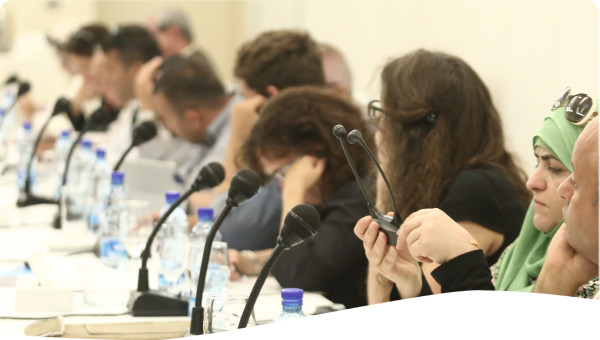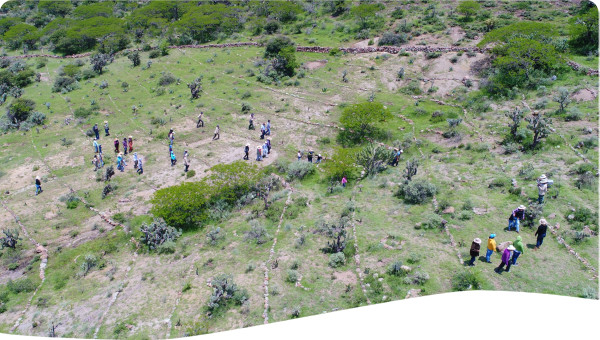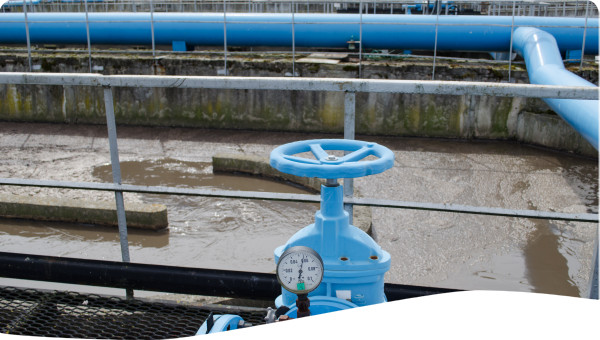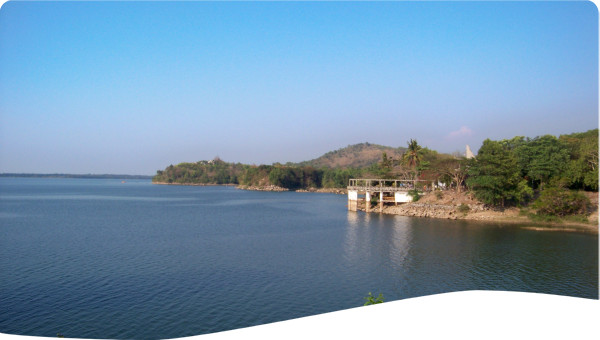After the USSR was dissolved, Romania has experienced water scarcity for agriculture. The World Bank and USAID are providing loans/funds for irrigation projects and to strengthen water users associations. This case thus illustrates that irrigation subsidies may be needed to support agriculture until farming efficiency improves and returns from the sale of agricultural products can cover costs.
Agriculture is an important sector in Romania’s economy, providing about 14% of GDP and 37% of employment. Prior to the 1989 revolution, agriculture was a strong export sector but today food imports are necessary. The shift from a centralized economy in 1990 to a market-oriented system and the redistribution of land (from state farms to the former owners) disrupted agriculture and the organization and maintenance of irrigation systems.
Although the majority of cropped area is rain-fed, droughts are common in the semi-arid climate especially during the summer growing season and yields are uncertain without irrigation.
The World Bank has scheduled a loan to Romania for irrigation rehabilitation and reform in the Danube River valley. Complementing this effort, USAID is funding a project to develop and strengthen water users associations (WUAs) to own and operate the equipment for on-farm water distribution.
Effective WUAs are a critical component of restructuring Romania’s irrigation systems and increasing the efficiency of irrigation through farmer participation and delivery of irrigation water on demand. A Water User Associations Law was adopted providing that voluntary, non-profit WUAs should be formed to own and operate the equipment for on-farm water distribution.
Typically, WUAs should consist of members owning or leasing adjacent plots of land within the hydraulic area covered by an irrigation pumping station. Government policy is to gradually reduce irrigation subsidies and eventually WUAs should be sustained on water charges and membership fees collected from their members. This requires WUAs capable of providing cost-effective irrigation services and an agricultural system capable of commercial production.
Ongoing training and technical assistance is supporting WUAs and relevant government agencies with the tasks and duties regarding WUA organization, management, financial administration, and operation and maintenance of the irrigation system. WUAs need new approaches to O&M and financial administration to achieve more cost-effective irrigation. Farmers must be organized to formulate cropping and irrigation plans and monitor implementation.
The ability of WUAs to implement a cropping pattern that yields market returns, covers the cost of irrigation, and increases farmer incomes will be key to their long-term success. Access to credit to obtain capital for repair and replacement of irrigation equipment is also important for sustainable agriculture.
The World Bank has scheduled a USD 50-100 million loan to GOR for the Irrigation Rehabilitation and Reform Project (IRRP) which would provide resources to rehabilitate between 150,000-170,000 hectares of irrigated area. The proposed World Bank loan will include two components that include rehabilitation of public sector irrigation infrastructure and restructuring of the irrigation sector in a way that draws clear lines between the public and private sectors while also assigning clear rights and responsibilities to each. Rehabilitation is planned only for the irrigation schemes where farmers are willing to organize into WUAs. The World Bank loan foresees a continued public responsibility under the auspices of an appropriately restructured National Society for Land Reclamation to ensure water supplies to the SPPs in the irrigation systems. At that point, WUAs are expected to take over the responsibility of coordinating irrigation O&M and cost recovery. Since the IRRP will focus rehabilitation efforts only on irrigation schemes supported by farmers in WUAs, USAID began funding the 3.5-year Water Users Association Development Project (WUADP) to help promote and develop WUAs in the World Bank IRRP areas. WUADP’s goal is to provide technical assistance and training to support development and strengthening of WUAs in Romania. Their key objectives also include supporting the commercialization of Romania’s agricultural sector, strengthening the capacity of GOR to provide a legal and regulatory structure that supports the establishment of viable WUAs, and supporting establishment of an advisory service that can provide information and technical support to WUAs on an ongoing basis. The legal and regulatory framework governing the creation and management of water user associations is still subject to revision. Romania’s current WUA law is GEO (Government Emergency Ordinance) No. 147/1999 on Irrigation Water Users Associations approved by Law No. 573/2001. Both USAID and the World Bank support revision of the current WUA law prior to implementation of IRRP. The World Bank has emphasized the linkages between WUA development and irrigation rehabilitation and has stipulated that WUA formation must reach a threshold level of covering 60% of the area covered by the IRRP Phase I loan before IRRP can begin. Strengthening the capacity of GOR to support the establishment of viable WUAs depends on developing an appropriate legal and regulatory structure.
Many of the early WUAs had fundamental weaknesses and did not make a clear distinction between the three main WUA bodies – the General Assembly, the Management Board, and the Executive staff – and their respective roles. In some cases, members of the Management Board were also paid Executive staff. Mixing governance with management creates a clear conflict of interest. Many of the newly formed WUAs were only marginally participatory organizations. Sustainable WUAs must have an organizational structure that clearly separates governance from management. Improved legislation to define roles and responsibilities for all stakeholders associated with WUAs will be necessary to help guide and regulate effective, demand-driven approaches to irrigation water management.
WUADP is providing training and technical assistance to support WUAs and government agencies with the tasks and duties regarding WUA organization, management, financial administration, and O&M of the irrigation system. Training will help support WUAs to find new approaches to O&M and financial administration to achieve more cost-effective irrigation. It is also addressing ways to help farmers become better organized to formulate cropping and irrigation plans and monitor implementation.
One of the major responsibilities in irrigated farming is the assessment of crop water requirements and irrigation scheduling within the entire river valley. However, the current responsibility of WUAs is limited to local management of on-farm irrigation equipment. Broader decisions on other farming operations rest with farmers working individually or through an Agricultural Association. In parallel to and often independently of WUAs, the strengthening of Agricultural Associations is also developing in Romania under Law No. 36/1991. Many farmers have already recognized that land consolidation is critical if they want to increase their yields and pay for irrigation O&M costs. Fragmentation of farmland restricts the ability to use the irrigation system effectively as well as the available agricultural equipment and machinery for cultivation and harvest. Consolidation and joint management through forming agricultural associations will help achieve more efficient commercial farming operations that can generate sufficient income to cover the costs of irrigation.
In the pilot areas, there are a relatively large number of agricultural associations compared to WUAs. WUADP is therefore working to strengthen agricultural associations because the ability of WUAs to implement a cropping pattern that yields market returns, covers the cost of irrigation, and increases farmer incomes will be key to their long-term success.
Appropriate legislation and regulations are necessary to allow all stakeholders (farmers, WUAs, government agencies) to carry out their respective roles and facilitate farmer participation for demand-driven irrigation water management.
Irrigation subsidies may be needed to support agriculture until farming efficiency improves and returns from the agriculutral sales. The irrigation subsidies should be targeted directly to water users with transparent linkages between the government agencies and the water users.
Irrigation equipment transferred to WUAs must be in good condition to translate potential into effective demand for irrigation water and support sustainable agriculture.
WUAs and their members need knowledge and experience to make management decisions associated with irrigated farming, such as assessment of crop water requirements and irrigation scheduling.
Access to credit to obtain capital for repair and replacement of irrigation equipment is also important for sustainable agriculture.
 Case studies
Case studies


